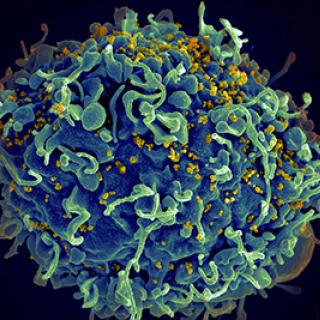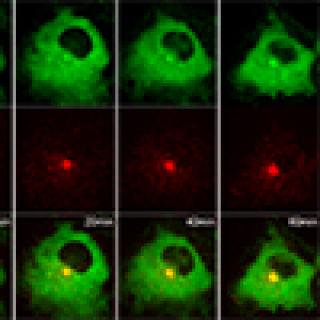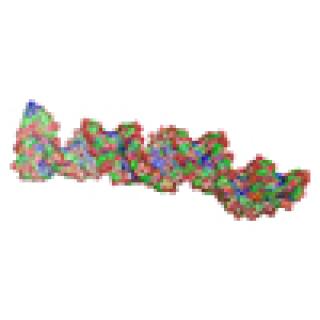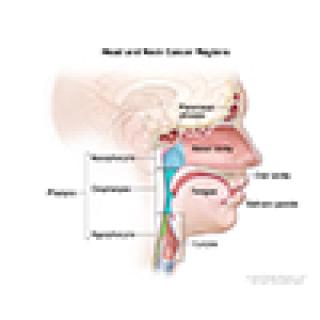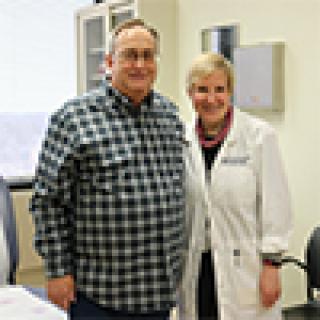News and Events
Celebrating CCR Careers: Steven Z. Pavletic, M.D., Ph.D.
Steven Z. Pavletic, M.D., Ph.D., is a renowned expert in chronic graft-versus-host disease, a serious late complication that can happen after allogeneic bone marrow transplants. After serving at the NCI for over 20 years, he is now announcing his retirement.
Read MoreLandmark discovery: H2AX as a sensor of DNA damage
William Bonner’s curiosity about histones led to the discovery that the protein H2AX is altered in response to harmful DNA damage called a double-strand break. This powerful tool has led to breakthroughs in both basic and clinical cancer research.
Read MoreNew mechanism for regulating differentiation discovered in human embryonic stem cells
Researchers in the Center for Cancer Research have discovered a new mechanism involving a nuclease complex called the RNA exosome that represses differentiation of human embryonic stem cells. This represents the first time this mechanism has been studied in these cells.
Read MoreGene-regulating microRNAs gain control over hundreds of new genes with common sequence modification
MicroRNAs have an enormous influence over what happens inside cells. By blocking the activity of specific sets of genes, they help control virtually every known biological pathway and process. Disruptions in microRNAs have been linked to many diseases, and understanding how these molecules function, which genes they control and how they themselves are regulated are high priorities in cancer research.
Read MoreGastrointestinal tumors harbor T cells that recognize patients’ unique tumor antigens
CCR scientists, led by Steven A. Rosenberg, M.D., Ph.D., have determined that many common gastrointestinal tumors bear mutations capable of eliciting an immune response, suggesting that immunotherapy could be an effective way to treat these common cancers.
Read MoreResearch shows long noncoding RNA influences expression of key HIV receptor
New research from the Center for Cancer Research has identified a long noncoding RNA that influences the expression of CCR5, a receptor that HIV uses to infect immune cells. The finding points to the molecule as a potential marker that indicates a patient’s susceptibility to the virus.
Read MorePediatric Oncology Branch patient shares neurofibromatosis journey at NIH
Xavier, a patient in the Pediatric Oncology Branch, was born with an incompletely formed leg bone and a large number of dark spots all over his body. When Xavier broke his weak leg at only 11 months of age, he was diagnosed with neurofibromatosis type 1 (NF1). He came to the NIH for treatment, and his tumors have shrunk by more than 20 percent thanks to treatment with selumetinib.
Read MoreAkt protein kinase pathway regulates key step in the initiation of cilia formation
CCR investigators have discovered that activating the Akt protein kinase pathway stabilizes the binding of the WDR44 protein to the Rab11 protein. This prevents Rab11 from binding to the Rabin8 protein, thereby blocking cilia formation. When Akt is inactive, though, Rab11 instead is bound by FIP3, enhancing its binding to Rabin8, which helps initiate cilia formation. Since abnormalities in cilia formation are associated with a number of types of cancer, these findings point to several potential targets for cancer therapy.
Read MoreBacterial compound targets cancer-promoting RNA
Screening more than 3,000 natural products identified a compound that stops the growth of cancer cells by targeting a growth-promoting microRNA.
Read MoreInvestigators test combination therapy for head and neck squamous cell carcinoma in new trial
Patients with recurrent head and neck squamous cell carcinoma (HNSCC) may be eligible to participate in a new clinical trial at the NIH Clinical Center. This trial tests a therapy of a novel radiosensitizer, birinapant, in combination with radiotherapy for patients whose HNSCC has come back at or near the place of the original tumor.
Read MoreA patient’s 10-year journey to moxetumomab for hairy cell leukemia
Randy, a father, husband, engineering quality consultant and lifelong “Motor City” resident, was diagnosed with hairy cell leukemia in 1998 at the age of 41. After participation in a clinical trial at the NIH Clinical Center, his body has shown a complete response to the drug moxetumomab pasudotox, which was developed at the National Cancer Institute’s Center for Cancer Research.
Read More




